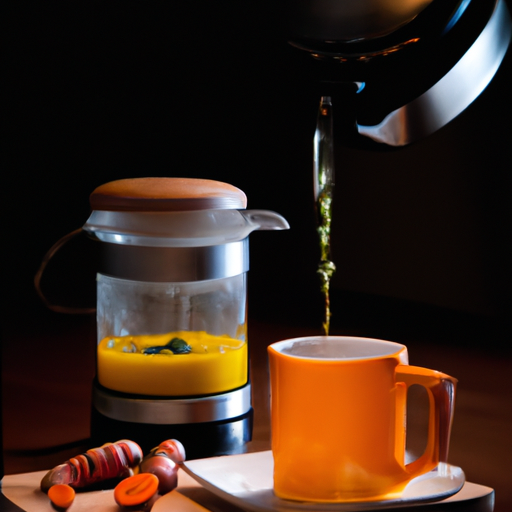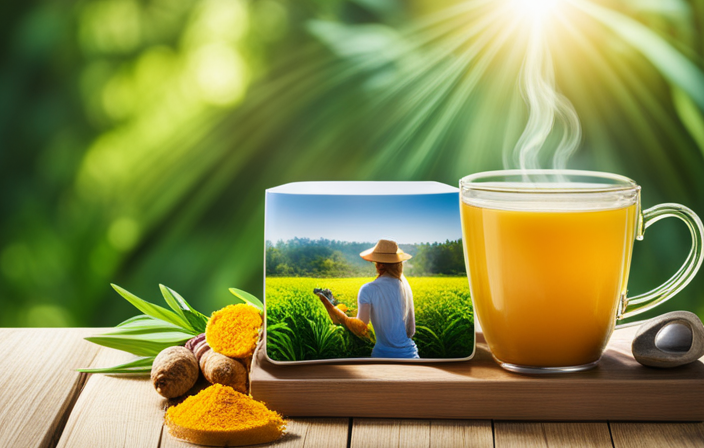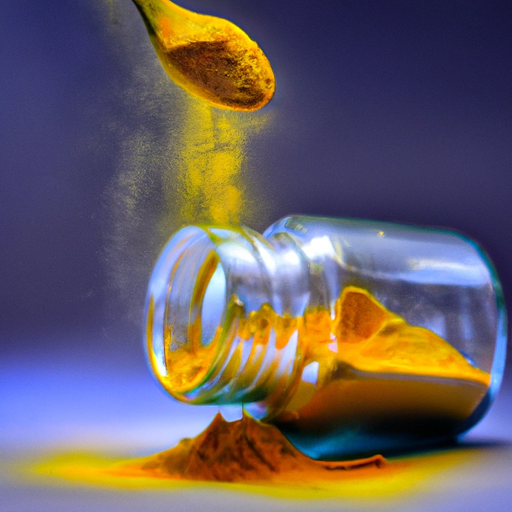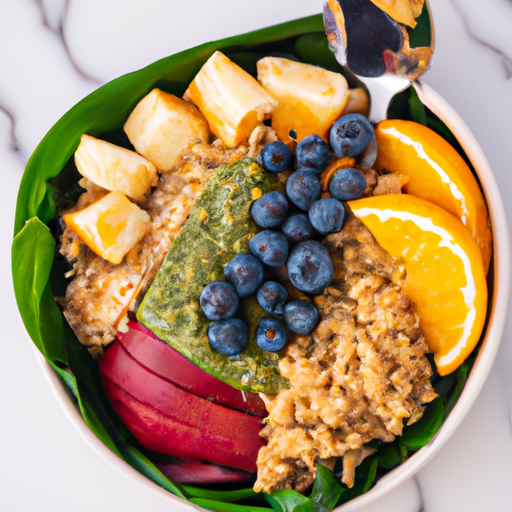Are you looking for a delicious and healthy way to start your day? Look no further than turmeric tea with root and ginger. This warm and soothing beverage is not only packed with flavor, but it also boasts numerous health benefits.
As someone who has experienced the positive effects of turmeric and ginger firsthand, I am excited to share with you my simple and effective method for brewing this delightful tea. By following a few easy steps, you can create a cup of turmeric tea that is both delicious and nutritious.
From gathering the ingredients to enjoying the final product, I will guide you through each stage of the process. So grab your turmeric root and ginger, and let’s get started on this invigorating journey to wellness and flavor.
Key Takeaways
- Turmeric and ginger have numerous health benefits, including antioxidant and anti-inflammatory properties.
- Boiling water is essential for extracting the beneficial compounds and ensuring a safe beverage.
- Simmering the tea allows for a thorough release of the active ingredients, resulting in a more flavorful and nutritious beverage.
- Turmeric tea can be sweetened with honey, maple syrup, stevia, or agave nectar.
Gather the Ingredients and Equipment
Now, you’re going to need to grab your trusty grater and get ready to infuse your kitchen with the warm, earthy aroma of freshly grated turmeric root and zesty ginger. Preparing turmeric and ginger is the first step in making a delicious and nutritious turmeric tea.
Turmeric, known for its vibrant yellow color, is a potent spice that’s been used for centuries in traditional medicine. It’s rich in curcumin, a compound that has powerful antioxidant and anti-inflammatory properties. Ginger, on the other hand, adds a subtle spiciness and warmth to the tea, while also providing numerous health benefits. It aids in digestion, reduces inflammation, and boosts the immune system.
To prepare the turmeric and ginger, start by washing them thoroughly under running water to remove any dirt or impurities. Next, using a grater, finely grate the turmeric root and ginger. Be careful with your fingers as turmeric can stain. Once grated, you’re ready to move on to the next step of making your turmeric tea: brewing the ingredients.
Prepare the Turmeric and Ginger
First, carefully peel and grate the vibrant yellow turmeric root and the fiery ginger, releasing their invigorating aromas. Turmeric and ginger not only add a burst of flavor to recipes but also offer numerous health benefits. Turmeric is known for its powerful anti-inflammatory properties, while ginger aids digestion and helps relieve nausea. Incorporating these ingredients into your diet can support overall well-being.
There are various ways to use turmeric and ginger in recipes. You can add grated turmeric and ginger to stir-fries, soups, and curries to enhance the flavors. Another option is to make a paste by blending the grated turmeric and ginger with a small amount of water or oil, which can be used as a marinade or added to smoothies for a nutritional boost. Additionally, you can steep grated turmeric and ginger in hot water to make a refreshing and healthy turmeric-ginger tea.
Now that the turmeric and ginger are prepared, it’s time to move on to the next step: boiling the water.
Boil the Water
Once the water’s boiling, its steamy tendrils dance in the air, filling the kitchen with a comforting warmth. Boiling water’s essential in making turmeric tea as it not only helps extract the beneficial compounds from the turmeric and ginger but also ensures a safe and hygienic beverage. Boiling water effectively kills any potential pathogens or bacteria that might be present in the ingredients, providing a clean and healthy base for your tea.
There are different methods to boil water for turmeric tea. One common method’s to bring the water to a boil in a pot on the stove. This allows for easy monitoring and adjustment of the heat. Another option’s to use an electric kettle, which quickly brings the water to a boil and automatically shuts off when done. Alternatively, a microwave-safe container can be used to heat the water in the microwave until it reaches boiling point. Whichever method you choose, make sure to use fresh, clean water for the best results.
Now that the water’s boiling, it’s time to add the turmeric and ginger to create a flavorful and healthful tea.
Add the Turmeric and Ginger
As the boiling water swirls and steams, the fragrant spices infuse into a golden elixir, promising warmth and wellness with every sip. Turmeric and ginger, known for their powerful health benefits, come together in this invigorating tea. Here are some different ways to incorporate these superfoods into your diet:
-
Fresh Turmeric and Ginger: Grate a thumb-sized piece of fresh turmeric and ginger root into the boiling water. This allows for maximum flavor and nutrient extraction.
-
Turmeric and Ginger Powder: If you don’t have access to fresh roots, you can use powdered turmeric and ginger instead. Add a teaspoon of each to the boiling water, ensuring they dissolve completely.
-
Turmeric and Ginger Tea Bags: For a convenient option, use pre-packaged turmeric and ginger tea bags. Simply drop one or two bags into the boiling water and let them steep for a few minutes.
-
Turmeric and Ginger Paste: Another option is to use turmeric and ginger paste, which can be found in health food stores or made at home. Add a tablespoon of the paste to the boiling water and stir until well combined.
Incorporating turmeric and ginger into your diet has been shown to reduce inflammation, boost immunity, and improve digestion. Now that the spices are added, let the tea simmer and extract all their goodness.
Let the Tea Simmer
Allow the aromatic blend to dance and intertwine, filling the room with a symphony of flavors as the elixir gently simmers, captivating your senses with its soothing melody. Simmering is a crucial step in the process of making turmeric tea with root and ginger. The heat works its magic, extracting the beneficial compounds from the turmeric and ginger, infusing the water with their potent goodness. This slow and steady approach allows for a more thorough release of the active ingredients, resulting in a more flavorful and nutritious tea.
Simmering techniques play a vital role in maximizing the health benefits of both ginger and turmeric. Ginger, known for its anti-inflammatory properties, releases its gingerol compounds during the simmering process. These compounds have been shown to reduce inflammation, alleviate nausea, and boost overall digestive health. Turmeric, on the other hand, contains curcumin, a powerful antioxidant and anti-inflammatory compound. Simmering the turmeric root helps to unlock curcumin’s full potential, enhancing its bioavailability and making it easier for our bodies to absorb.
As the tea gently simmers, the flavor profile becomes richer and more robust. The earthy notes of turmeric blend harmoniously with the subtle spiciness of ginger, creating a warm and comforting beverage. The aroma that fills the air is inviting and invigorating, setting the stage for a truly enjoyable tea-drinking experience.
Transitioning into the next section, it’s time to strain and serve this exquisite elixir, unlocking its full potential and delighting your taste buds with every sip.
Strain and Serve
Pour the golden elixir through a fine mesh strainer, capturing the vibrant hues and delicate flavors, before serving yourself a steaming cup of pure bliss. Straining the tea ensures a smooth and velvety texture, free from any residual particles. Now that you’ve strained your turmeric tea, let’s explore some discussion ideas.
When it comes to sweetening turmeric tea, there are various options to suit different preferences. You can add a touch of honey for a natural sweetness or use maple syrup for a richer flavor. Stevia or agave nectar are great alternatives for those watching their sugar intake. Experiment with different sweeteners to find your perfect combination.
As for the best time of day to drink turmeric tea for maximum health benefits, it’s recommended to have a cup in the morning or before bed. In the morning, turmeric tea can provide a gentle wake-up boost and support digestion throughout the day. Drinking it before bed may promote relaxation and help with sleep quality.
Now that you’ve strained and sweetened your turmeric tea, it’s time to enjoy its health benefits. Sip on this invigorating beverage, packed with antioxidants and anti-inflammatory properties, to support your overall well-being. Soothe your body and mind with each sip, knowing that you’re taking a step towards a healthier lifestyle.
Enjoy the Health Benefits of Turmeric Tea with Root and Ginger
Indulge in the health benefits of turmeric tea by incorporating the powerful combination of root and ginger, which studies have shown to have a significant impact on reducing inflammation in the body. Turmeric tea, made with root and ginger, isn’t just delicious but also packed with numerous health benefits. Here are three reasons why you should give it a try:
-
Anti-inflammatory properties: Both turmeric and ginger are known for their anti-inflammatory properties. Curcumin, the active compound in turmeric, has been shown to reduce inflammation and oxidative stress in the body. Ginger, on the other hand, contains gingerol, which has similar effects. By combining these two ingredients in the tea, you can enjoy a potent anti-inflammatory drink.
-
Improved digestion: Turmeric and ginger have long been used to aid digestion. They can help alleviate symptoms of indigestion, bloating, and gas. Drinking turmeric tea with root and ginger can soothe your stomach and promote better digestion.
-
Boosted immune system: Turmeric and ginger are rich in antioxidants, which can help strengthen your immune system. Regular consumption of turmeric tea can support your body’s natural defense mechanisms and help fight off infections.
Incorporating turmeric tea with root and ginger into your daily routine can provide you with these incredible health benefits. So why not try out some turmeric tea recipes and start enjoying the many advantages it has to offer?
Frequently Asked Questions
How long does it take to prepare turmeric and ginger for tea?
Preparing turmeric and ginger for tea takes about 10 minutes. The preparation time may vary depending on how finely you grate the root. Both turmeric and ginger have numerous health benefits, including reducing inflammation and boosting the immune system.
Can I use ground turmeric and ginger instead of fresh root?
Using powdered turmeric and ginger instead of fresh root in turmeric tea may be convenient, but it’s like watching a movie in black and white instead of vibrant colors. Fresh ingredients provide more flavor, aroma, and a higher concentration of beneficial compounds.
Is it necessary to peel the turmeric and ginger before using them?
Peeling turmeric and ginger is not necessary, but it can improve the taste and texture. Using fresh root has more health benefits than ground, as it retains more nutrients and natural compounds.
How much turmeric and ginger should I use for a single cup of tea?
For a single cup of turmeric tea, I recommend using about 1 teaspoon of grated turmeric root and 1/2 teaspoon of grated ginger. These ingredients not only add flavor but also provide numerous health benefits. Incorporate them into your ginger tea recipes for extra goodness.
Can I add other ingredients like honey or lemon to enhance the flavor of the tea?
Yes, you can add honey and lemon to enhance the flavor of turmeric tea. Honey has antibacterial properties and can soothe a sore throat, while lemon provides vitamin C and aids digestion.
Conclusion
In conclusion, making turmeric tea with root and ginger is a simple and enjoyable process that offers numerous health benefits. By incorporating this delicious beverage into your daily routine, you can experience the anti-inflammatory and antioxidant properties of turmeric, as well as the immune-boosting effects of ginger.
According to a study published in the Journal of Medicinal Food, turmeric has been shown to help improve digestion and reduce symptoms of indigestion in individuals with functional dyspepsia.
So, why not give this flavorful tea a try and reap the many benefits it has to offer?










